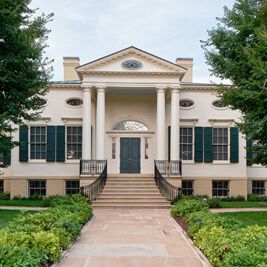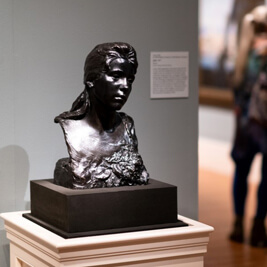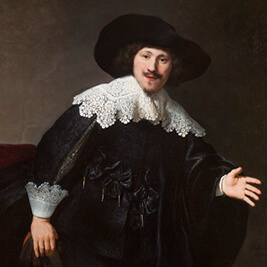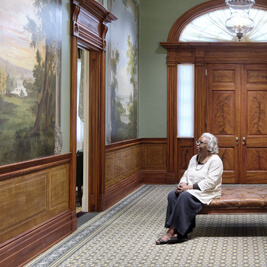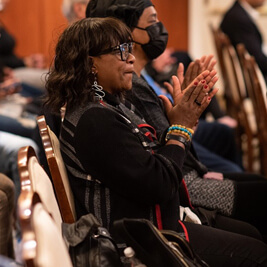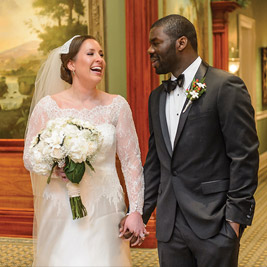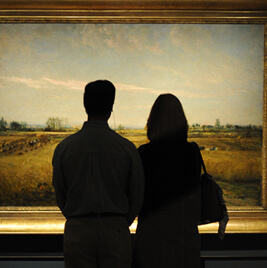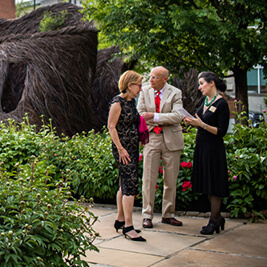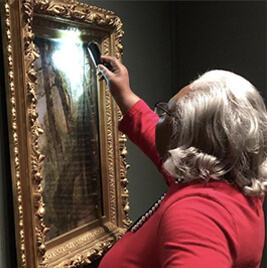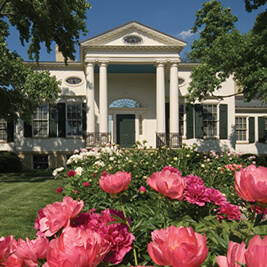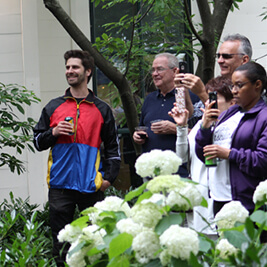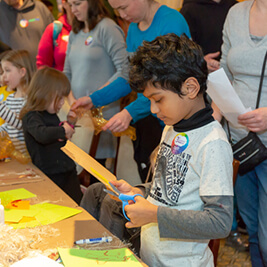- Do + See
- Dine + Host
- Give + Join
- Educate + Learn
Cincinnati's Changing Landscape
The Lytle Park Neighborhood
By Ann Glasscock, Assistant Curator
Like the images in the Taft’s upcoming exhibition, Paris to New York: Photographs by Eugène Atget and Berenice Abbott, which document Paris and New York amid change, the illustrations seen here provide a glimpse of what has been lost and what remains of Cincinnati’s ever-changing landscape.
Directly in front of the Taft Museum of Art extends a large expanse of greenery known as Lytle Park. Dedicated on July 6, 1907, the park was named in honor of Civil War Brigadier General William Haines Lytle. Its western section, bounded by Third, Lytle, Fourth, and Lawrence streets, was photographed around 1905 by Louis Rombach and Theodore Groene. The six views they took document structures that once stood on the grounds that are now the park: the Sisters of St. Clare Convent; a boarding house (formerly the Conservatory of Music); several stately residential homes; and lastly, the Lytle mansion.1 The Cincinnati Public Library’s official photographer, Elmer L. Foote, also photographed the Lytle home (fig. A). Foote’s image of the mansion allows us to imagine a time during the 19th century when this impressive residence, along with the home that later became the Taft Museum of Art, dominated the eastern end of downtown.
Built in 1809, the Lytle estate was surrounded by a peach grove and gardens. The family hosted many prominent figures, including Henry Clay, Andrew Jackson, Martin Van Buren, and the Marquis de Lafayette. Around 1820, Martin Baum bought a plot of land and built a house across the street from the Lytle property. The Baum-Longworth-Sinton-Taft residence now serves as the Taft Museum of Art. This area of “Old Cincinnati” had become an oasis between the busy riverfront and the growing commercial district. This changed in the fall of 1903, when the city announced its plan to establish several public parks and playgrounds.
Councilman Michael Mullen proposed the site contained by Third, Lytle, Fourth, and Lawrence streets. The Baum home, which was later owned by Nicholas Longworth and subsequently Anna Sinton and Charles Phelps Taft, was out of harm’s way (fig. B). The Lytle mansion, however, faced the threat of destruction.
When Mullen suggested that the Lytle house be condemned, he caused a stir not only among the Lytle descendants, but among numerous individuals and historic organizations. Several of Cincinnati’s most well-to-do citizens, such as Charles P. Taft, signed petitions to save the house. The philanthropist Mary Emery—a friend of Anna Taft—offered to provide $50,000 for the repair and upkeep of the home so that it could be used by the Historical and Philosophical Society of Ohio. Members of the general public also pled for the Lytle mansion, with a veteran of the Grand Republican Army declaring: “I would be one of a number to man a Gatling gun to shoot down the first man who dares tear a brick from the wall of the home.”2 Despite these heartfelt and concerted efforts, the Council strongly opposed the idea of saving the building, and one of Cincinnati’s oldest brick homes was ultimately demolished.
Meanwhile, further changes were taking place just east of the Lytle Park area in the early 1900s. For example, the American Book Company was constructed to the south of the Taft home in 1904, and the A. H. Pugh Printing Company was built directly to the north in 1905. Currently under reconstruction, the Anna Louise Inn, originally built with funding from the Tafts, was completed in 1909. By the 1950s, the city acquired the area adjacent to the Inn for further extension of Lytle Park. The land where several multistory buildings once stood was cleared to make way for additional greenspace (figs. C and D). With Cincinnati’s continuously changing landscape, what does the future hold for the Lytle Park neighborhood?
1. See Richard R. Kesterman, “Six Views of Lytle Square,” Ohio Valley History 11, no. 4 (Winter 2011): 69–75, for more on this group of photographs.
2. “Veterans Indignant: And Threaten To Prevent Tearing Down of Lytle Home,” Cincinnati Enquirer, May 24, 1908, n.p.
